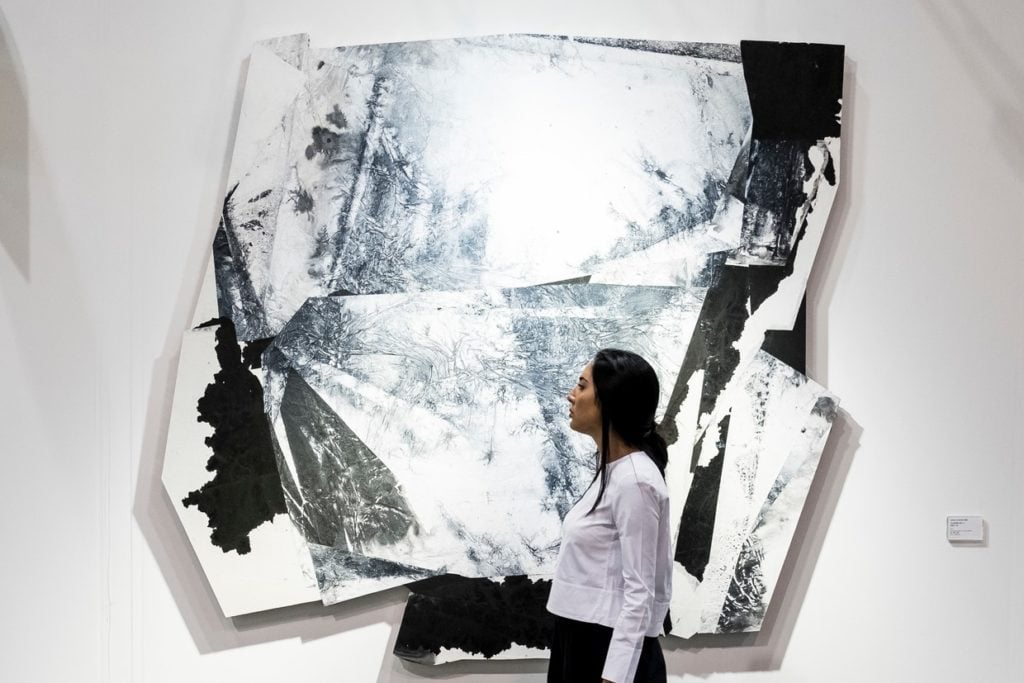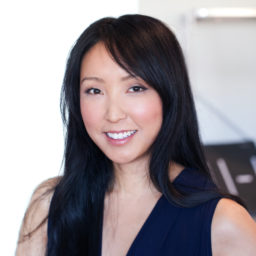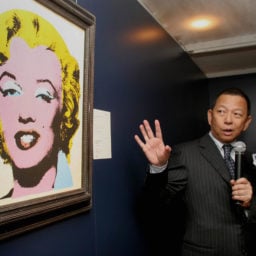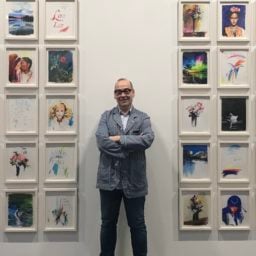Beijing-based gallery Ink Studio’s sale of a painting by Zheng Chongbin at Art Basel Hong Kong this week was actually three Art Basels in the making. The gallery met the unnamed buyer of the $84,000 ink-and-acrylic work during its Art Basel debut in 2016, “and we’ve been working on her ever since,” director Chris Reynolds told artnet News during this week’s fair, which runs through March 31.
This is the long game that defines the Art Basel experience for many mid-tier galleries, a reality overshadowed by dazzling stories of record-breaking sales on opening day. “People forget that a gallerist’s job isn’t just to find artists and sell their work; it’s also to find potential collectors and groom them into being patrons,” said Art Basel’s global director Marc Spiegler.
Ink Studio has been faring particularly well; this year in Hong Kong, the Art Basel edition where collectors are known to take a slower approach to purchasing, the five-year-old gallery was able to recoup the $100,000 investment in its booth on day one.
Other galleries, however, are feeling the squeeze of the steep costs of participation.
“The competition is very big, considering there are 248 galleries, and there are a lot of big sharks—international sharks, Chinese sharks, local sharks,” said Ferdie Ju of Shanghai’s Gallery 55, taking note of the inordinate attention—and profits—claimed by top blue-chip galleries. He says he sold a few smaller works out of his solo presentation of Chinese artist Yu Aijun, who makes wild swarms of black oil on recycled blueprints. But his gallery will, as it has every year for the last three years, take a loss at the fair.
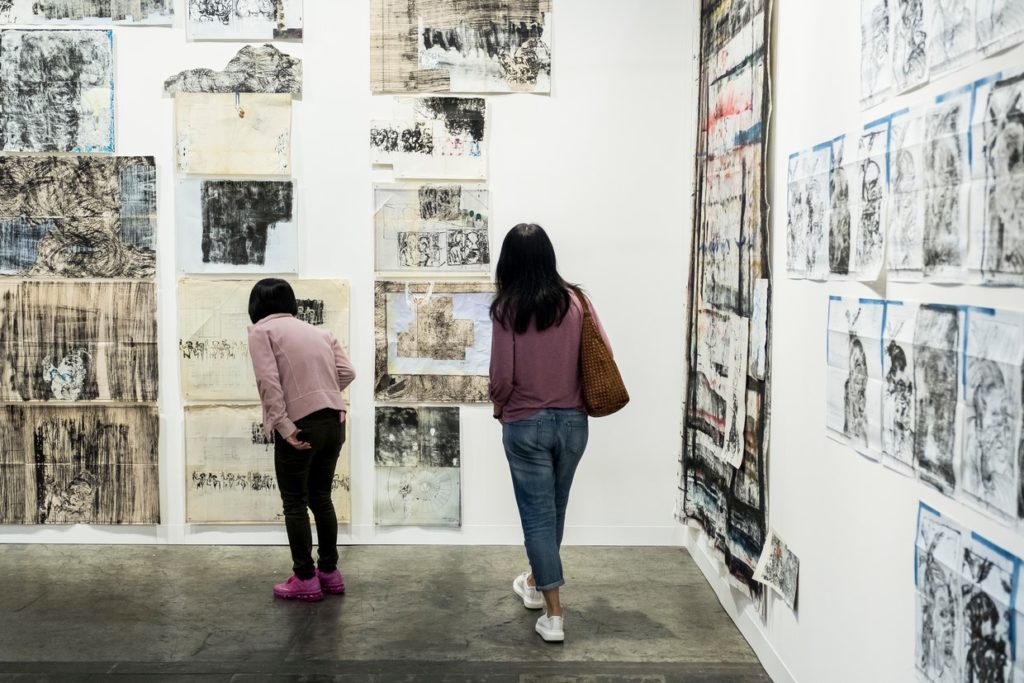
In the Insights sector of the fair, Shanghai Gallery 55 presents works by Chinese artist Yu Aijun. © Art Basel
Indeed, while blockbuster sales like Lévy Gorvy’s $35 million painting by Willem de Kooning are often choreographed well in advance, smaller dealers have to do a similar amount of legwork with no guarantee of a payoff. And if they do get one, the windfall is nowhere near as large, because the work they sell is not as expensive. Amid all the coverage of Western galleries flooding into Hong Kong, longtime Asian dealers say that so far, the rising tide has not significantly lifted their own boats.
“We’re kind of suffering,” said Taipei gallerist Chi-Wen Huang, who’s been coming to Art Basel Hong Kong since its first edition in 2013. “My gallery is midsize; we’re not Gagosian or White Cube, but we pay the same, and then we normally sell after the fair. You follow up for a couple of months, and sometimes they even come back after a year researching the artist and requesting more information. It’s a high cost to bring works that don’t sell, but every year you put aside the budget.”
For Huang, the long game of fair participation is less about collectors than institutions. Each year, she designs her presentation at Art Basel Hong Kong more as an exhibition than an art-fair booth. This time, her five-person group show is curated around the theme “Desire and Transgression.” It’s a strategy that she hopes, in the long term, will balance the short-term economic hit she takes to participate.
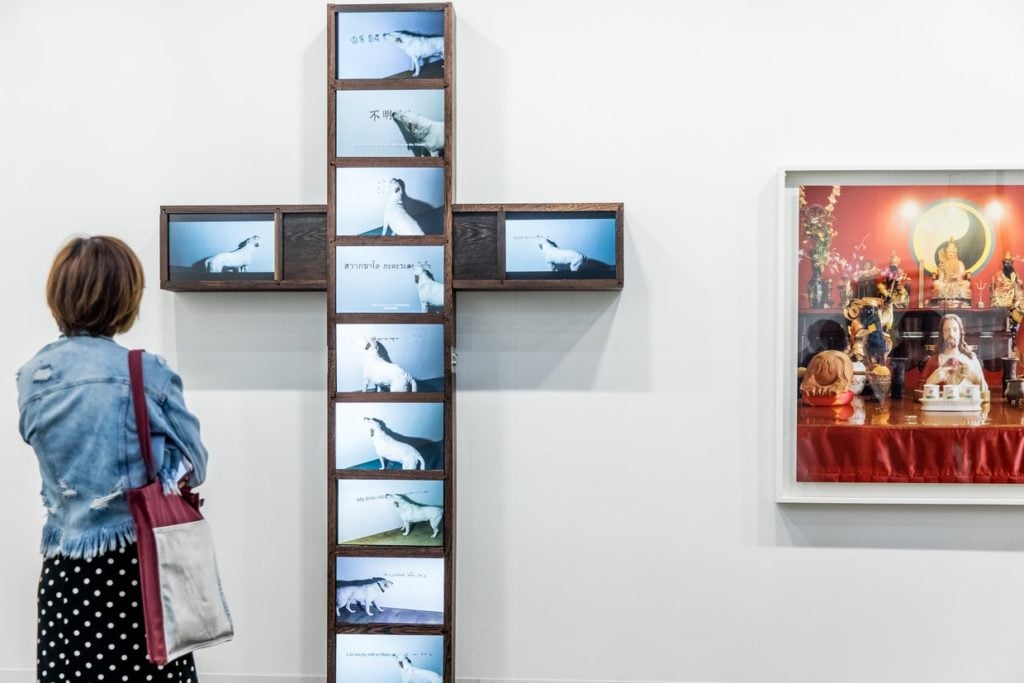
Taipei gallerist Chi-Wen Huang’s group presentation includes works by Chang Chao-Tang, Chien-Chi Chang, Yin-Ju Chen, Heidi Voet, and Hung-Chih Peng. © Art Basel
The Manila-based gallery 1335 Mabini has adopted a similar philosophy. In 2016, its debut year at Art Basel Hong Kong, it failed to break even. But that same year, the gallery met representatives from the long-awaited M+ museum in Hong Kong, who plan to visit them next week.
“It’s very evident that there are more museums coming through than in previous years,” noted Chris Reynolds, citing visits from staff at the Los Angeles County Museum of Art, Chicago’s Smart Museum of Art, the Solomon R. Guggenheim Museum in New York, and the Centre Pompidou in Paris, as well as M+.
Although these important exchanges occur far outside the confines of the convention center, some say they are a primary benefit of fair participation—albeit one that can’t be quantified in sales reports. “That’s why the only way to measure our success as a fair is whether galleries are reapplying or not,” Spiegler said, “and that number is usually between 95 and 99 percent.”
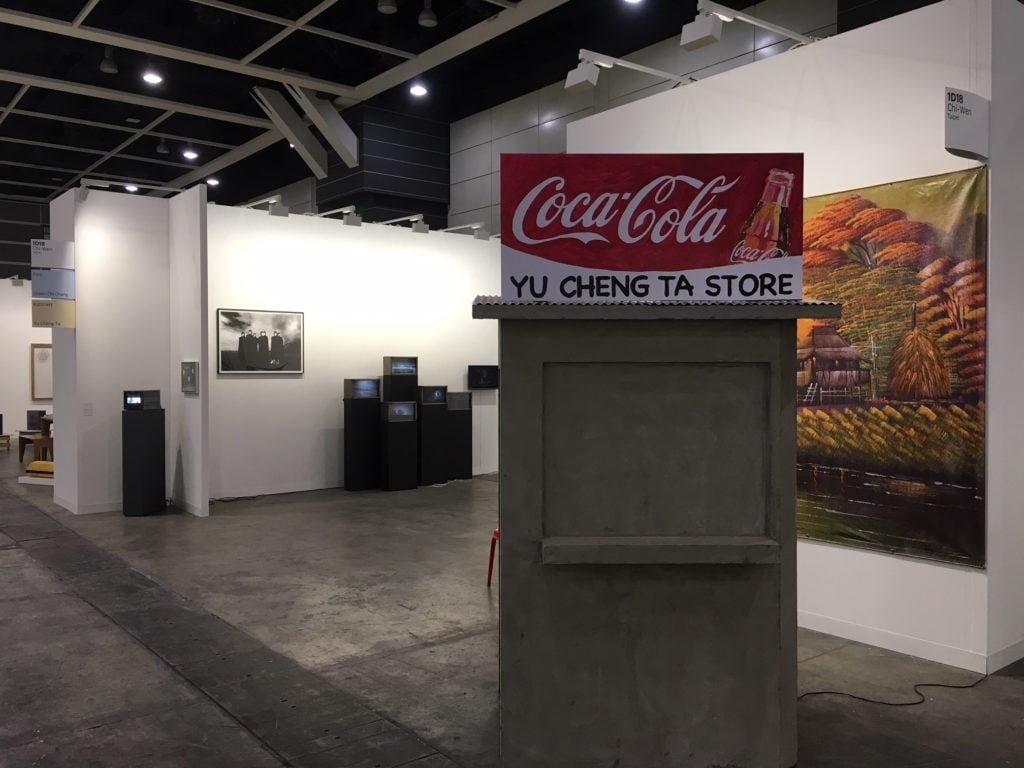
Chi-Wen Gallery also presented Yu Cheng-Ta’s Yu Cheng-Ta Store (2017) in the Kabinett sector. It sold to a private collection in Hong Kong. Photo courtesy of the gallery.
Among those planning to reapply is Ferdi Ju of Gallery 55, despite having operated at a loss during the past three years. “You can’t just expect every single effort you make will be rewarded immediately or in a greater amount of money. 55 is about pushing art forward, being edgy, and not being comfortable. Hopefully in the long run our investment, in terms of the booth and the effort, will yield our artists being recognized and collected by a wide audience, and maybe getting exposure in museums.”
How long is he willing to stay in the game? “Forever,” he said. “Or as long as I can afford it. I’m a fighter.”
